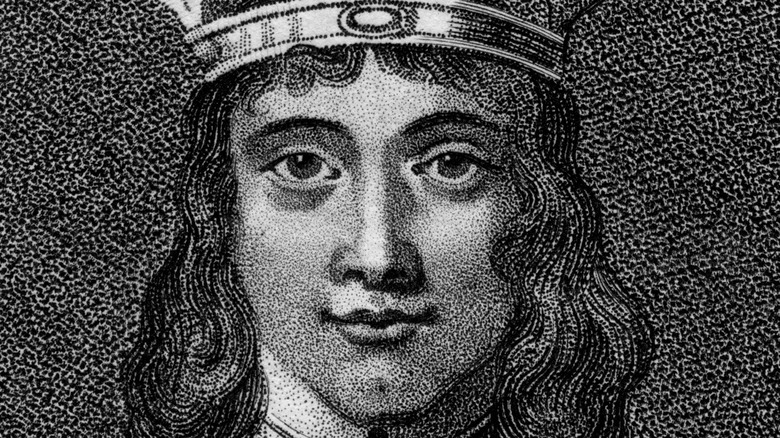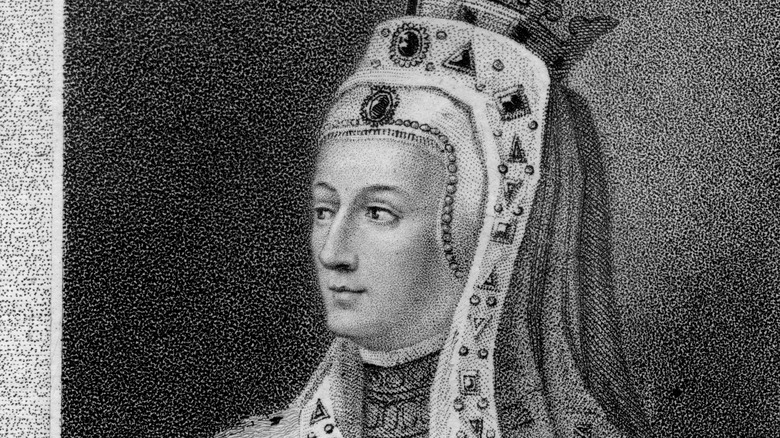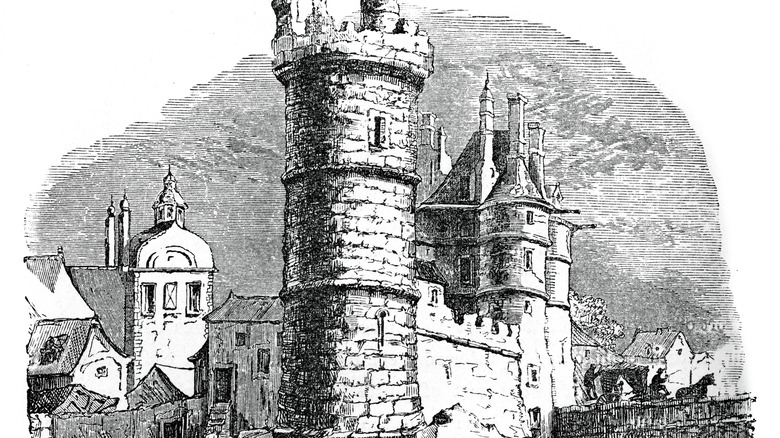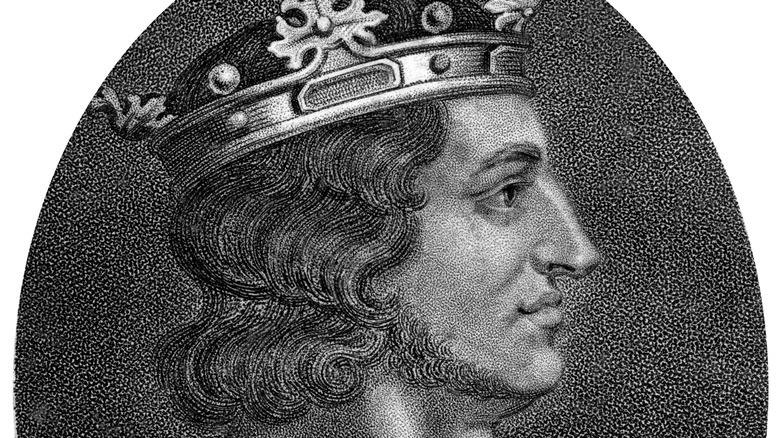The French Royal Family Scandal Of 1314 Explained
At the start of the 14th century, France was ruled by King Philip IV (pictured). He had come into power in 1285 after succeeding his father, Philip III, and he would rule for about 29 years before his death in 1314. But in that final year of his life, the French ruler would find his kingdom at the center of one of the biggest European royal scandals.
In 1314, a salacious scandal that one can find today in a steamy drama or soap opera erupted in the monarchy. The king was married to Joan of Navarre, and they would have several children together: Margaret, born in 1288; Louis X, born in 1289; Blanche, born in 1290; Philip V, born in 1291; Isabella, born in 1292; Charles IV, born in 1294, and Robert, born 1297. But at the time the scandal came into effect, his queen, their two oldest daughters (Marguerite and Blanche), and last born son (Robert) had all died, per History Extra. So the family at that point consisted of Philip IV, his three sons, and one daughter.
All of his children would move ranks in their lives. Princess Isabella married King Edward II of England and became queen consort. The princes would all eventually marry and become kings of France. The oldest, Louis, married Margaret of Burgundy; his second son, Philip V, was married to her cousin, Joan II of Burgundy; and his other son, Charles, was married to her sister, Blanche of Burgundy. Each of these women was central to the scandal.
The start of the scandal
King Philip IV's daughter was the source of the scandal that turned his entire family upside down in 1314, and ultimately ended his family's dynasty. Isabella (above) would accuse her three sisters-in-law of adultery. And what would be the focus of her accusations was where this adultery was taking place. The Tour de Nesle (Nesle Tower) was a tower that guarded and looked over Paris. But it was also the site of some apparent debauchery.
But how did Isabella come to the conclusion that all three of her brothers' wives were committing adultery? As the wife of King Edward II, of course she didn't live in France, as England was her home. However, she often made visits to her former Parisian palace and came bearing gifts. In one visit she made after all her brothers were married, Isabella gifted her new sisters-in-law with silk purses. The purses weren't just any silk purse — they were specifically embroidered, too.
When she made another visit home not long after bestowing the purses, she observed two knights with two purses. The men were brothers, Philippe and Gauthier d'Aunay. And the purses that happened to be in their possession were the ones she had given to Margaret and Blanche. Isabella quickly relayed that information to her father, and what happened next was all-out 14th century punishment.
The bombshell revelation at Tour de Nesle
Turns out, the knights didn't just happen upon the purses. When Philip IV learned of Isabella's discovery, he decided to have the brothers watched, and the surveillance was damning. The D'Aunays were meeting in secret with the princesses at the Tour de Nesle on various occasions (per The Ministry of History). Although Joan II was apparently not involved in the affairs, she was a witness of the disloyalty. The three women were all arrested, leading to Margaret and Blanche admitting their affairs with the D'Aunays, per History ... The Interesting Bits.
Joan II was given a reprieve and was able to plead her case. But for her cousin and sister, and the D'Aunay brothers, the outcome was different. The four would face brutal punishment. The two women were imprisoned and the D'Aunays were tortured beyond belief before being killed. According to Executed Today, the brothers were flayed, beaten, burned, tied and rolled on a wheel, and castrated. Their genitals were fed to dogs, per Historic UK. The brutal and tortuous execution was all done in the presence of the two princesses with whom they purportedly engaged in adultery.
The women then were sent to where they'd be imprisoned. Because both princes Louis and Charles would become kings, at some point their wives — two women guilty of adultery — would become queens. But it's not like they got to rule anyway.
A dynasty comes to an end
Philip IV died and the throne was succeeded by King Louis. Coincidentally, his "queen" died shortly after his ascension and he remarried (via Encyclopedia). He didn't live long. His brother Philip V would take over as new king and his wife, Joan II, became queen. But he, too, didn't live long.
That left the last living son, Charles, to succeed the throne in 1322. However, just like his older brother, he was still married to his imprisoned wife, Blanche. She became a queen who was unable to enjoy any real benefits of royalty, like her cousin before her. King Charles would get the marriage annulled so he could remarry. His ex-wife was sent to live in a convent, per Digital Humanities Institute. His reign was a short four years until his death in 1328.
With neither of Philip IV's sons having sons themselves, the family's dynasty, also known as the Capets, came to an end. They were succeeded by the Valois family, which would be led by Philip VI (pictured).



